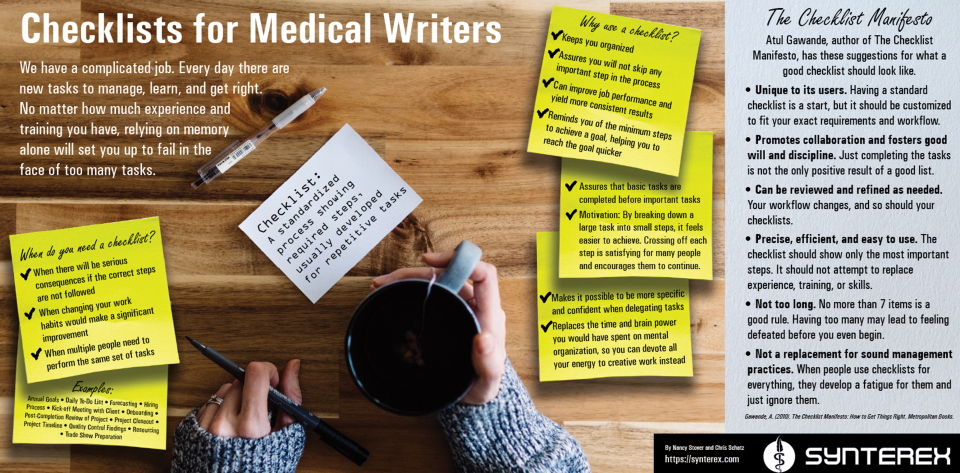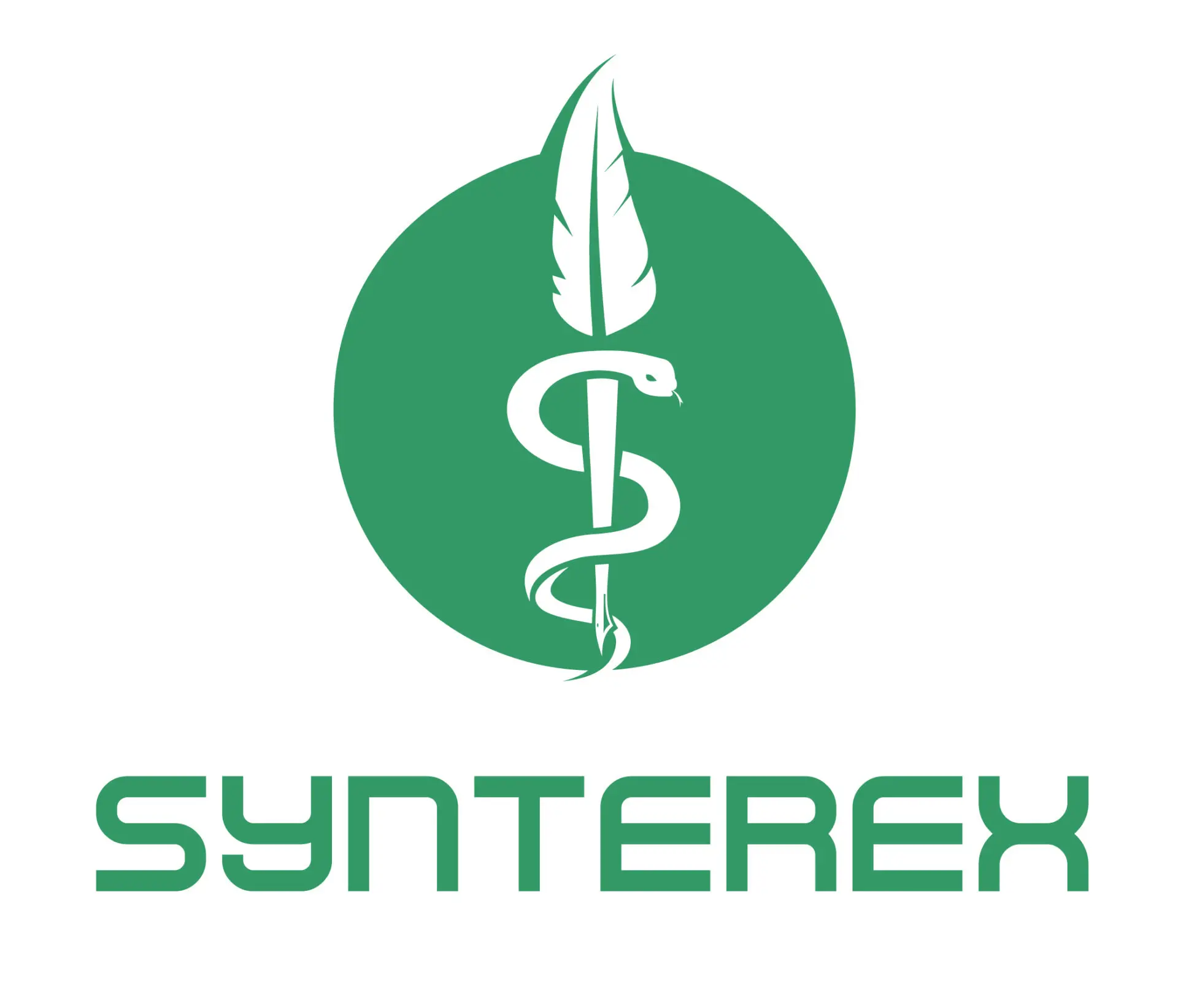Checklists are a great tool. Download this poster, presented by Synterex at the 2022 American Medical Writers Association (AMWA) conference, or scroll down for a text-only version.

We have a complicated job. Every day there are new tasks to manage, learn, and get right. No matter how much experience and training you have, relying on memory alone will set you up to fail in the face of too many tasks.
When do you need a checklist?
- When there will be serious consequences if the correct steps are not followed
- When changing your work habits would make a significant improvement
- When multiple people need to perform the same set of tasks
Examples:
- Annual Goals
- Daily To-Do List
- Forecasting
- Hiring Process
- Kick-off Meeting with Client
- Onboarding
- Post-Completion Review of Project
- Project Closeout
- Project Timeline
- Quality Control Findings
- Resourcing
- Trade Show Preparation
Why use a checklist?
- Keeps you organized
- Assures you will not skip any important step in the process
- Can improve job performance and yield more consistent results
- Reminds you of the minimum steps to achieve a goal, helping you to reach the goal quicker
- Assures that basic tasks are completed before important tasks
- Motivation: By breaking down a large task into small steps, it feels easier to achieve. Crossing off each step is satisfying for many people and encourages them to continue.
- Makes it possible to be more specific and confident when delegating tasks
- Replaces the time and brain power you would have spent on mental organization, so you can devote all your energy to creative work instead
The Checklist Manifesto
Atul Gawande, author of The Checklist Manifesto, has these suggestions for what a good checklist should look like.
- Unique to its users. Having a standard checklist is a start, but it should be customized to fit your exact requirements and workflow.
- Promotes collaboration and fosters good will and discipline. Just completing the tasks is not the only positive result of a good list.
- Can be reviewed and refined as needed. Your workflow changes, and so should your checklists.
- Precise, efficient, and easy to use. The checklist should show only the most important steps. It should not attempt to replace experience, training, or skills.
- Not too long. No more than 7 items is a good rule. Having too many may lead to feeling defeated before you even begin.
- Not a replacement for sound management practices. When people use checklists for everything, they develop a fatigue for them and just ignore them.
Reference
Gawande, A. (2010). The Checklist Manifesto: How to Get Things Right. Metropolitan Books.
Posted in Medical Writing & Pharma
